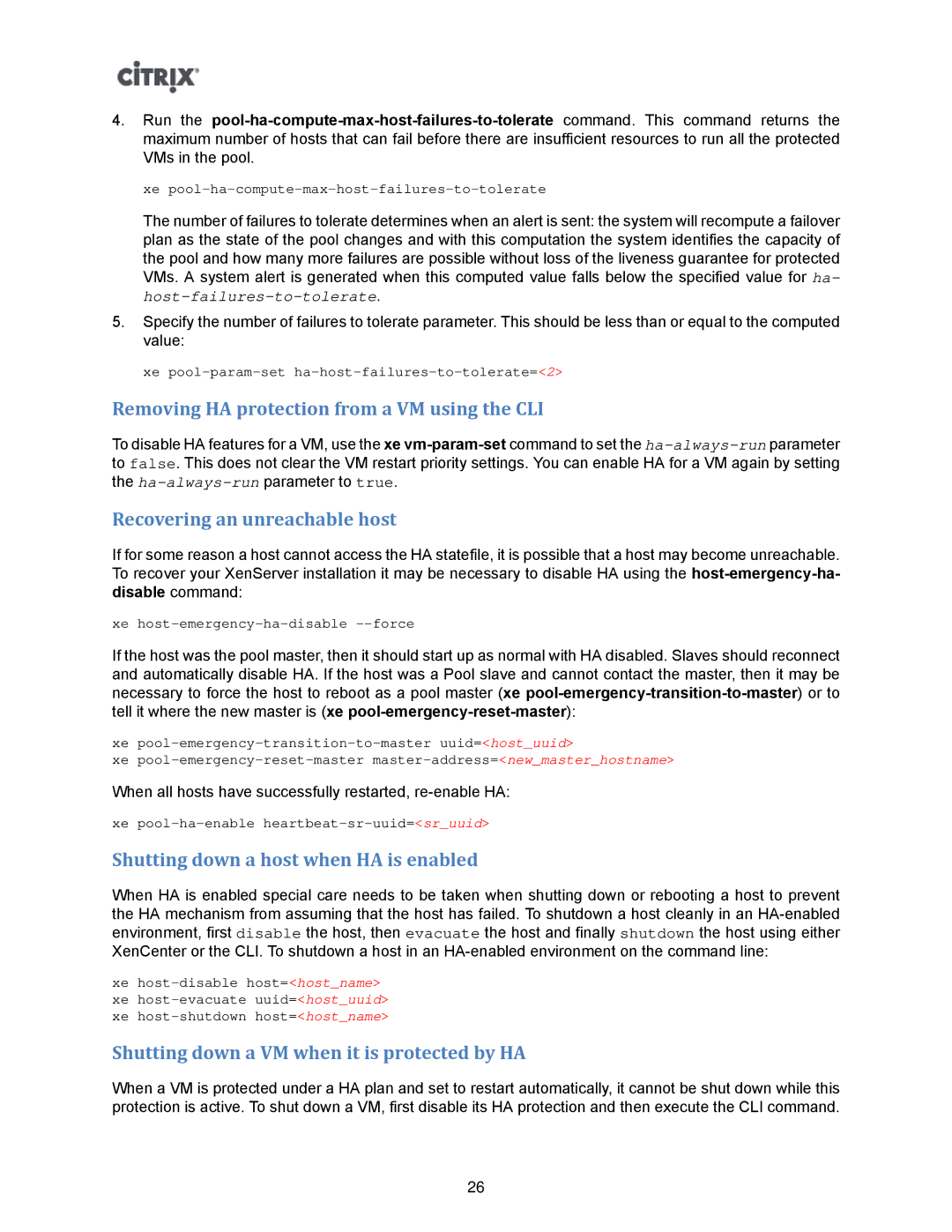4.Run the
xe
The number of failures to tolerate determines when an alert is sent: the system will recompute a failover plan as the state of the pool changes and with this computation the system identifies the capacity of the pool and how many more failures are possible without loss of the liveness guarantee for protected VMs. A system alert is generated when this computed value falls below the specified value for ha-
5.Specify the number of failures to tolerate parameter. This should be less than or equal to the computed value:
xe
Removing HA protection from a VM using the CLI
To disable HA features for a VM, use the xe
Recovering an unreachable host
If for some reason a host cannot access the HA statefile, it is possible that a host may become unreachable. To recover your XenServer installation it may be necessary to disable HA using the
xe
If the host was the pool master, then it should start up as normal with HA disabled. Slaves should reconnect and automatically disable HA. If the host was a Pool slave and cannot contact the master, then it may be necessary to force the host to reboot as a pool master (xe
xe
xe
When all hosts have successfully restarted,
xe
Shutting down a host when HA is enabled
When HA is enabled special care needs to be taken when shutting down or rebooting a host to prevent the HA mechanism from assuming that the host has failed. To shutdown a host cleanly in an
xe
Shutting down a VM when it is protected by HA
When a VM is protected under a HA plan and set to restart automatically, it cannot be shut down while this protection is active. To shut down a VM, first disable its HA protection and then execute the CLI command.
26
